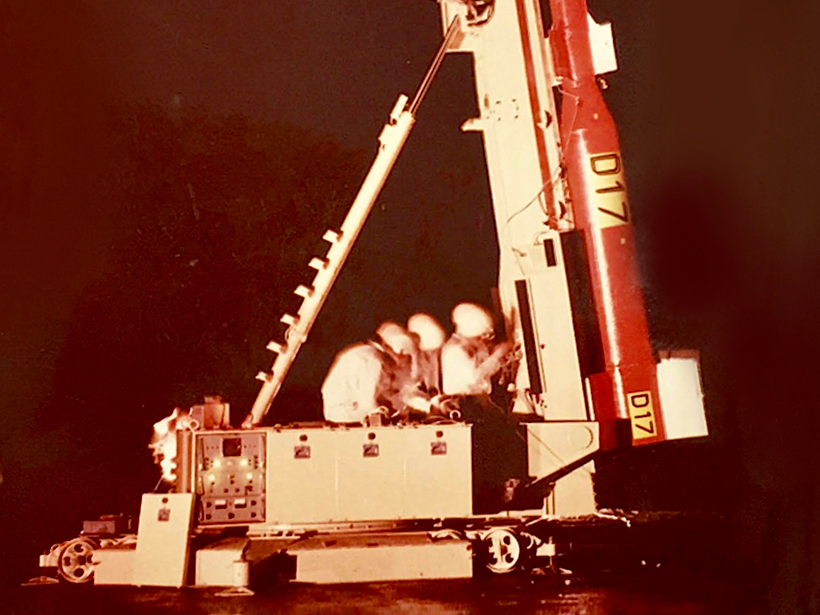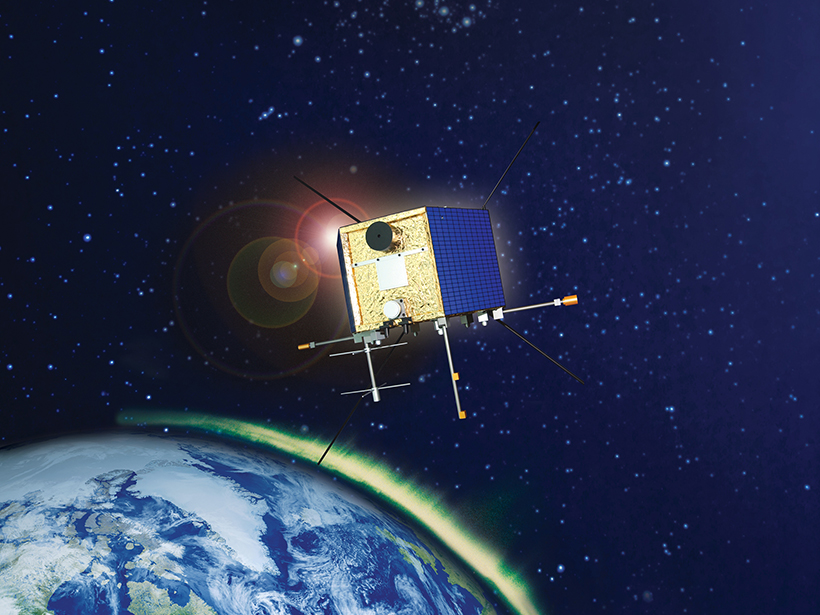New calculations show that lightning-triggered plasma waves in Earth's magnetosphere absorb energy from slow particles and energize electrons to levels that can damage satellites severely.
Journal of Geophysical Research: Space Physics
Polar Interlopers in the Aurora
A new study suggests that poleward boundary intensifications in the aurora are caused by fast flows of plasma from the poles into the auroral oval.
After Decades, High-Altitude Observations Revived at Jicamarca
Recent upgrades to the Jicamarca Radio Observatory in Peru allow it to probe electron densities several thousand kilometers above Earth, a feat it hasn't accomplished in 50 years.
Retracing the First Spaceborne Electric Field Measurement
Fifty years ago, a sounding rocket made history by taking the first measurement of an electric field in space. What techniques were used to capture this data?
Buzzing Ice Shelf Makes Waves in the Air Above
The resonant vibrations of the Ross Ice Shelf in Antarctica are disturbing the atmosphere above it, creating huge ripples.
What Drives Variation in the Ionosphere’s Electron Density?
The long-term trend in the electron density of the ionospheric F layer may be natural, not man-made.
Scientists Map Temperature and Density in Earth’s Exosphere
Data from multiple orbiters give a clearer picture of how density and temperature interact and what that could mean for future satellite missions.
Searching for Lightning's Signature on Venus
How energetic would lightning on Venus have to be to be detected by sensors? A new model sheds light.
Tracking Ions at the Edge of the Atmosphere
The first results from a recently launched satellite hold promise for studying solar storms, the very top of Earth's ionosphere, and how the atmosphere is evolving.
Mysteries of the Magnetosphere
Scientists investigate how dipolarization fronts in Earth's protective magnetosphere interact with the environment around them.







